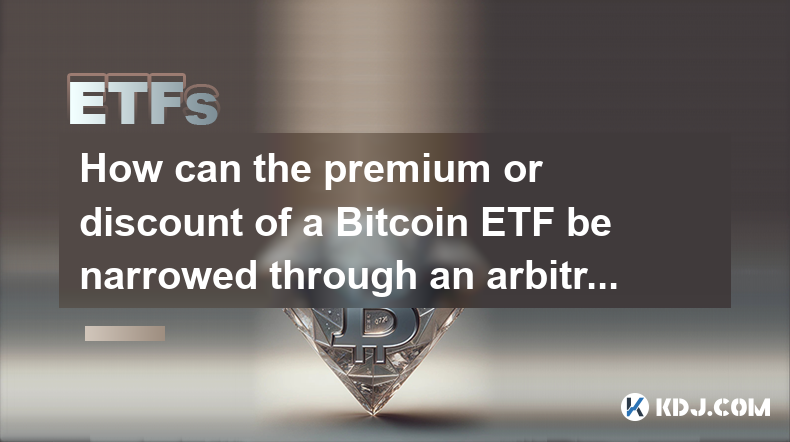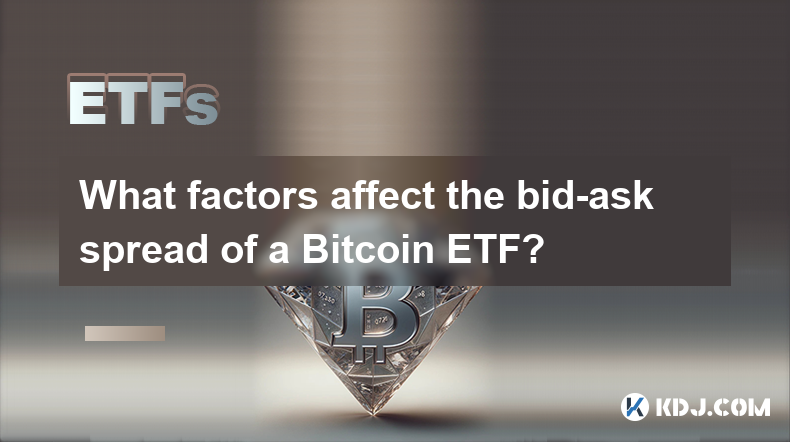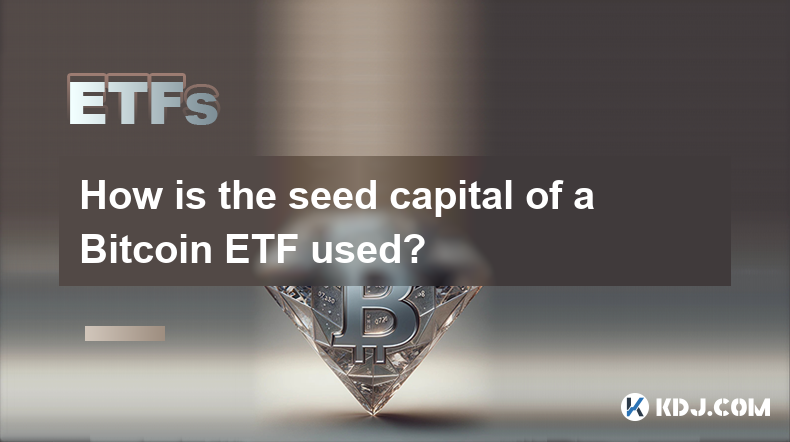-
 Bitcoin
Bitcoin $88,528.5821
1.60% -
 Ethereum
Ethereum $1,627.9897
-0.15% -
 Tether USDt
Tether USDt $0.9999
-0.01% -
 XRP
XRP $2.1034
-0.97% -
 BNB
BNB $605.4842
0.46% -
 Solana
Solana $140.0033
0.23% -
 USDC
USDC $1.0001
0.01% -
 Dogecoin
Dogecoin $0.1645
1.74% -
 TRON
TRON $0.2464
1.35% -
 Cardano
Cardano $0.6412
-0.26% -
 Chainlink
Chainlink $13.4496
-0.34% -
 Avalanche
Avalanche $20.4044
-0.88% -
 UNUS SED LEO
UNUS SED LEO $8.8459
-6.44% -
 Stellar
Stellar $0.2490
-4.17% -
 Sui
Sui $2.3130
2.12% -
 Shiba Inu
Shiba Inu $0.0...01257
-0.56% -
 Toncoin
Toncoin $2.9135
-3.52% -
 Hedera
Hedera $0.1725
0.70% -
 Bitcoin Cash
Bitcoin Cash $347.0066
1.87% -
 Hyperliquid
Hyperliquid $18.2549
2.01% -
 Litecoin
Litecoin $79.4705
-1.53% -
 Polkadot
Polkadot $3.7759
-3.42% -
 Dai
Dai $0.9999
-0.01% -
 Bitget Token
Bitget Token $4.4443
-0.71% -
 Ethena USDe
Ethena USDe $0.9992
-0.01% -
 Pi
Pi $0.6345
0.05% -
 Monero
Monero $216.0153
-0.06% -
 Pepe
Pepe $0.0...08131
3.42% -
 Uniswap
Uniswap $5.3950
-0.76% -
 OKB
OKB $51.0907
0.33%
How liquid is Bitcoin ETF?
Bitcoin ETF liquidity hinges on trading volume, bid-ask spreads, and regulatory clarity, impacting how easily investors buy/sell shares without significant price changes. A highly liquid ETF minimizes price slippage.
Feb 27, 2025 at 07:55 pm

How Liquid is Bitcoin ETF? Exploring the Liquidity Landscape of Bitcoin Exchange-Traded Funds
Key Points:
- Defining Liquidity in the Context of Bitcoin ETFs: Liquidity refers to the ease with which a Bitcoin ETF can be bought or sold without significantly impacting its price. Several factors influence this, including trading volume, bid-ask spreads, and the size of the underlying Bitcoin holdings. We'll explore how these factors play out in the unique environment of Bitcoin ETFs.
- Impact of Regulatory Landscape: The regulatory environment significantly impacts Bitcoin ETF liquidity. Clear and consistent regulatory frameworks foster investor confidence, leading to higher trading volumes and thus greater liquidity. Conversely, uncertainty and regulatory hurdles can suppress liquidity.
- Comparison with Spot Bitcoin Market Liquidity: We will compare the liquidity of Bitcoin ETFs to the liquidity of the spot Bitcoin market. This comparison will highlight the advantages and disadvantages of each, focusing on factors like accessibility, trading hours, and price volatility.
- Factors Affecting Bitcoin ETF Liquidity: We'll delve into various factors influencing Bitcoin ETF liquidity, including the size of the ETF, the expense ratio, the management team's reputation, and the overall market sentiment towards Bitcoin.
- Understanding Liquidity in the Context of Bitcoin ETFs:
The liquidity of a Bitcoin ETF is a crucial aspect for investors. It essentially refers to how easily an investor can buy or sell shares of the ETF without significantly affecting its market price. A highly liquid ETF allows investors to enter and exit positions quickly and efficiently, minimizing potential losses due to price slippage. Several key metrics help assess liquidity:
- Trading Volume: High trading volume indicates a significant number of buyers and sellers, leading to tighter spreads and more efficient price discovery. Low trading volume, on the other hand, can result in wider bid-ask spreads and potential difficulty in executing trades at desired prices. A Bitcoin ETF with high trading volume is generally considered more liquid.
- Bid-Ask Spread: The bid-ask spread represents the difference between the highest price a buyer is willing to pay (bid) and the lowest price a seller is willing to accept (ask). A narrow spread suggests high liquidity, as it implies that trades can be executed quickly at prices close to the current market price. Conversely, a wide spread indicates low liquidity, making it potentially costly to execute trades.
- Market Depth: Market depth refers to the number of buy and sell orders available at various price levels. A deep market indicates that large orders can be executed without significantly impacting the price, enhancing liquidity. A shallow market, however, can experience significant price movements in response to even moderately sized trades, reflecting lower liquidity.
- Underlying Asset Holdings: The liquidity of a Bitcoin ETF is also influenced by the liquidity of the underlying Bitcoin holdings. If the ETF manager faces difficulties in quickly buying or selling Bitcoin in the spot market to meet investor demand, it can negatively impact the ETF's liquidity. This is especially important during periods of high volatility in the Bitcoin market. The size and diversification of the ETF's Bitcoin holdings also influence its overall liquidity. A larger, more diversified ETF tends to be more liquid than a smaller, less diversified one.
- Impact of the Regulatory Landscape on Bitcoin ETF Liquidity:
The regulatory environment surrounding Bitcoin ETFs plays a crucial role in determining their liquidity. A clear and well-defined regulatory framework builds investor confidence, attracting more participants to the market and consequently boosting liquidity. This confidence stems from a sense of security and transparency, reducing the perceived risk associated with investing in Bitcoin ETFs. Conversely, a lack of clarity or restrictive regulations can create uncertainty and discourage investment, leading to lower trading volumes and reduced liquidity.
- Regulatory Clarity: Clear rules and guidelines regarding the eligibility, management, and trading of Bitcoin ETFs provide a stable foundation for market participants. This clarity reduces uncertainty and encourages institutional investors, who often prefer regulated environments, to participate. Increased institutional participation significantly contributes to higher trading volumes and improved liquidity.
- Regulatory Scrutiny: The level of regulatory scrutiny also impacts liquidity. While strict oversight can protect investors, excessive or inconsistent regulation can stifle innovation and deter investment, potentially hindering liquidity. A balanced approach, providing both investor protection and promoting market growth, is essential for fostering a liquid Bitcoin ETF market.
- Cross-Border Regulations: The regulatory landscape is not uniform across jurisdictions. Differences in regulations across countries can impact the ability of Bitcoin ETFs to attract international investors, thus affecting their liquidity. Harmonization of regulations or the establishment of clear cross-border frameworks can enhance the attractiveness of Bitcoin ETFs to a global investor base, thereby improving their liquidity.
- Comparing Bitcoin ETF Liquidity to Spot Bitcoin Market Liquidity:
Comparing the liquidity of Bitcoin ETFs to the spot Bitcoin market reveals key differences. The spot market, where Bitcoin is traded directly, is generally considered more liquid due to its 24/7 availability and high trading volumes. However, Bitcoin ETFs offer several advantages that can impact their liquidity in specific ways:
- Accessibility: Bitcoin ETFs provide easier access to Bitcoin for investors who may not be comfortable or equipped to trade directly on cryptocurrency exchanges. This broader accessibility can lead to increased demand for Bitcoin ETFs, potentially boosting their liquidity. The regulated nature of ETFs also appeals to investors who prefer a more regulated investment environment.
- Trading Hours: Bitcoin ETFs trade during regular stock market hours, unlike the spot market, which operates continuously. This can be both an advantage and a disadvantage. While it limits trading opportunities, it also provides a more structured and predictable trading environment, which can attract certain types of investors.
- Price Volatility: While Bitcoin ETFs track the price of Bitcoin, they are not directly exposed to the same level of volatility as the spot market. This reduced volatility can attract risk-averse investors, but it can also lead to lower trading volumes and potentially less liquidity compared to the spot market during periods of high Bitcoin price swings.
- Regulatory Oversight: The regulatory oversight of Bitcoin ETFs can increase investor confidence and attract institutional investors, potentially improving their liquidity relative to the unregulated spot market.
- Factors Affecting Bitcoin ETF Liquidity:
Numerous factors, beyond regulation and comparison to spot markets, influence the liquidity of a Bitcoin ETF:
- ETF Size: Larger ETFs, with a greater number of outstanding shares, generally have higher liquidity than smaller ones. This is because a larger pool of shares allows for more efficient trading and reduces the impact of individual trades on the price.
- Expense Ratio: The expense ratio, which represents the annual cost of owning the ETF, can influence investor demand. A lower expense ratio can attract more investors, leading to higher trading volumes and improved liquidity. High expense ratios may deter investors, leading to lower liquidity.
- Management Team Reputation: The reputation and track record of the ETF management team play a crucial role in investor confidence. A well-respected and experienced team can attract investors, boosting liquidity. Conversely, a less reputable team may lead to lower investor confidence and reduced liquidity.
- Market Sentiment: Overall market sentiment towards Bitcoin and the cryptocurrency market significantly impacts the liquidity of Bitcoin ETFs. Positive sentiment attracts investors, increasing trading volumes and improving liquidity. Negative sentiment can lead to reduced trading volumes and lower liquidity.
- Underlying Bitcoin Price Volatility: The volatility of the underlying Bitcoin price directly influences the liquidity of the Bitcoin ETF. During periods of high volatility, investors may be hesitant to trade, leading to lower liquidity. Conversely, during periods of low volatility, investors may be more inclined to trade, increasing liquidity. The ETF's ability to manage this volatility through hedging strategies or other methods can also impact liquidity.
FAQs:
Q: What are the risks associated with investing in a Bitcoin ETF?
A: Investing in a Bitcoin ETF carries risks similar to investing in Bitcoin directly, including price volatility, regulatory uncertainty, and the risk of hacking or theft from the custodian holding the underlying Bitcoin. However, ETFs also offer some risk mitigation, such as regulatory oversight and diversification of assets (depending on the ETF's structure).
Q: How can I assess the liquidity of a specific Bitcoin ETF before investing?
A: You can assess the liquidity of a Bitcoin ETF by reviewing its daily trading volume, bid-ask spread, and market depth. This information is typically available on the ETF's fact sheet or through financial data providers. You can also compare these metrics to other similar ETFs to gauge relative liquidity. Consult financial news and analysis for insights into market sentiment and overall ETF performance.
Q: Are all Bitcoin ETFs equally liquid?
A: No, the liquidity of Bitcoin ETFs varies depending on factors such as the size of the ETF, the expense ratio, the management team's reputation, and overall market sentiment. Some ETFs may have significantly higher trading volumes and narrower bid-ask spreads than others, indicating greater liquidity.
Q: What is the difference between a Bitcoin ETF and a Bitcoin futures ETF?
A: A Bitcoin ETF typically holds Bitcoin directly, while a Bitcoin futures ETF holds Bitcoin futures contracts. This difference can impact liquidity. Futures ETFs may experience higher liquidity due to the greater volume of futures trading, but they also expose investors to additional risks associated with futures contracts, such as roll yield and contango/backwardation.
Q: Can a Bitcoin ETF become illiquid?
A: Yes, a Bitcoin ETF can become illiquid under certain circumstances, such as during periods of extreme market volatility, regulatory uncertainty, or if the ETF manager faces difficulties in managing the underlying Bitcoin holdings. Low trading volume, wide bid-ask spreads, and limited market depth are all indicators of declining liquidity.
Disclaimer:info@kdj.com
The information provided is not trading advice. kdj.com does not assume any responsibility for any investments made based on the information provided in this article. Cryptocurrencies are highly volatile and it is highly recommended that you invest with caution after thorough research!
If you believe that the content used on this website infringes your copyright, please contact us immediately (info@kdj.com) and we will delete it promptly.
- British drug gang makes its own crypto to launch money
- 2025-04-22 18:50:12
- US Bitcoin ETFs Record Their Largest Daily Inflows Since January
- 2025-04-22 18:50:12
- Days before his 2025 inauguration, President Donald Trump announced the launch of his meme coin, a form of cryptocurrency.
- 2025-04-22 18:45:12
- XRP Community Figures Highlight Final Deadlines for SEC Decisions on Multiple Spot-Based XRP ETF Applications
- 2025-04-22 18:45:12
- Is It Time to Throw $1,000 Into Raydium Right Now? RAY Price Outlook
- 2025-04-22 18:40:12
- Mantra Burns 300 Million OM Tokens, Equivalent to 16.5% of the Total Supply
- 2025-04-22 18:40:12
Related knowledge

What is the difference in returns between long-term holding of a Bitcoin ETF and holding Bitcoin directly?
Apr 09,2025 at 04:15am
When considering the difference in returns between long-term holding of a Bitcoin ETF and holding Bitcoin directly, it's essential to understand the nuances and factors that affect each investment option. Both approaches have their unique advantages and potential drawbacks, which can significantly impact the overall returns over time. Understanding Bitc...

How is the "roll cost" of a futures Bitcoin ETF generated?
Apr 08,2025 at 01:22pm
The 'roll cost' of a futures Bitcoin ETF is a critical concept for investors to understand, as it directly impacts the performance of the ETF. In this article, we will delve into the mechanics of how the roll cost is generated, exploring the underlying processes and factors that contribute to this cost. Understanding Futures ContractsFutures contracts a...

How can the premium or discount of a Bitcoin ETF be narrowed through an arbitrage mechanism?
Apr 09,2025 at 12:07am
Arbitrage mechanisms play a crucial role in narrowing the premium or discount of a Bitcoin Exchange Traded Fund (ETF). Understanding how these mechanisms work can provide valuable insights into the dynamics of Bitcoin ETFs and their relationship with the underlying asset. This article will delve into the specifics of how arbitrage can be used to align t...

What factors affect the bid-ask spread of a Bitcoin ETF?
Apr 08,2025 at 08:50pm
The bid-ask spread of a Bitcoin Exchange Traded Fund (ETF) is a critical metric that investors and traders closely monitor. It represents the difference between the highest price a buyer is willing to pay (bid) and the lowest price a seller is willing to accept (ask). Several factors influence this spread, and understanding them can help investors make ...

How is the seed capital of a Bitcoin ETF used?
Apr 10,2025 at 02:15pm
The seed capital of a Bitcoin ETF plays a crucial role in the establishment and operation of the fund. This initial investment is used to create the fund's underlying assets, manage operational costs, and ensure the ETF can start trading on an exchange. Understanding how this seed capital is utilized provides insight into the mechanics of Bitcoin ETFs a...

What is the difference between "physically backed" and "synthetic" Bitcoin ETFs in terms of holding assets?
Apr 10,2025 at 04:56pm
Bitcoin Exchange Traded Funds (ETFs) have become a popular way for investors to gain exposure to the cryptocurrency market without directly owning the underlying asset. There are two primary types of Bitcoin ETFs: physically backed and synthetic. Understanding the differences between these two types, particularly in terms of how they hold assets, is cru...

What is the difference in returns between long-term holding of a Bitcoin ETF and holding Bitcoin directly?
Apr 09,2025 at 04:15am
When considering the difference in returns between long-term holding of a Bitcoin ETF and holding Bitcoin directly, it's essential to understand the nuances and factors that affect each investment option. Both approaches have their unique advantages and potential drawbacks, which can significantly impact the overall returns over time. Understanding Bitc...

How is the "roll cost" of a futures Bitcoin ETF generated?
Apr 08,2025 at 01:22pm
The 'roll cost' of a futures Bitcoin ETF is a critical concept for investors to understand, as it directly impacts the performance of the ETF. In this article, we will delve into the mechanics of how the roll cost is generated, exploring the underlying processes and factors that contribute to this cost. Understanding Futures ContractsFutures contracts a...

How can the premium or discount of a Bitcoin ETF be narrowed through an arbitrage mechanism?
Apr 09,2025 at 12:07am
Arbitrage mechanisms play a crucial role in narrowing the premium or discount of a Bitcoin Exchange Traded Fund (ETF). Understanding how these mechanisms work can provide valuable insights into the dynamics of Bitcoin ETFs and their relationship with the underlying asset. This article will delve into the specifics of how arbitrage can be used to align t...

What factors affect the bid-ask spread of a Bitcoin ETF?
Apr 08,2025 at 08:50pm
The bid-ask spread of a Bitcoin Exchange Traded Fund (ETF) is a critical metric that investors and traders closely monitor. It represents the difference between the highest price a buyer is willing to pay (bid) and the lowest price a seller is willing to accept (ask). Several factors influence this spread, and understanding them can help investors make ...

How is the seed capital of a Bitcoin ETF used?
Apr 10,2025 at 02:15pm
The seed capital of a Bitcoin ETF plays a crucial role in the establishment and operation of the fund. This initial investment is used to create the fund's underlying assets, manage operational costs, and ensure the ETF can start trading on an exchange. Understanding how this seed capital is utilized provides insight into the mechanics of Bitcoin ETFs a...

What is the difference between "physically backed" and "synthetic" Bitcoin ETFs in terms of holding assets?
Apr 10,2025 at 04:56pm
Bitcoin Exchange Traded Funds (ETFs) have become a popular way for investors to gain exposure to the cryptocurrency market without directly owning the underlying asset. There are two primary types of Bitcoin ETFs: physically backed and synthetic. Understanding the differences between these two types, particularly in terms of how they hold assets, is cru...
See all articles























































































